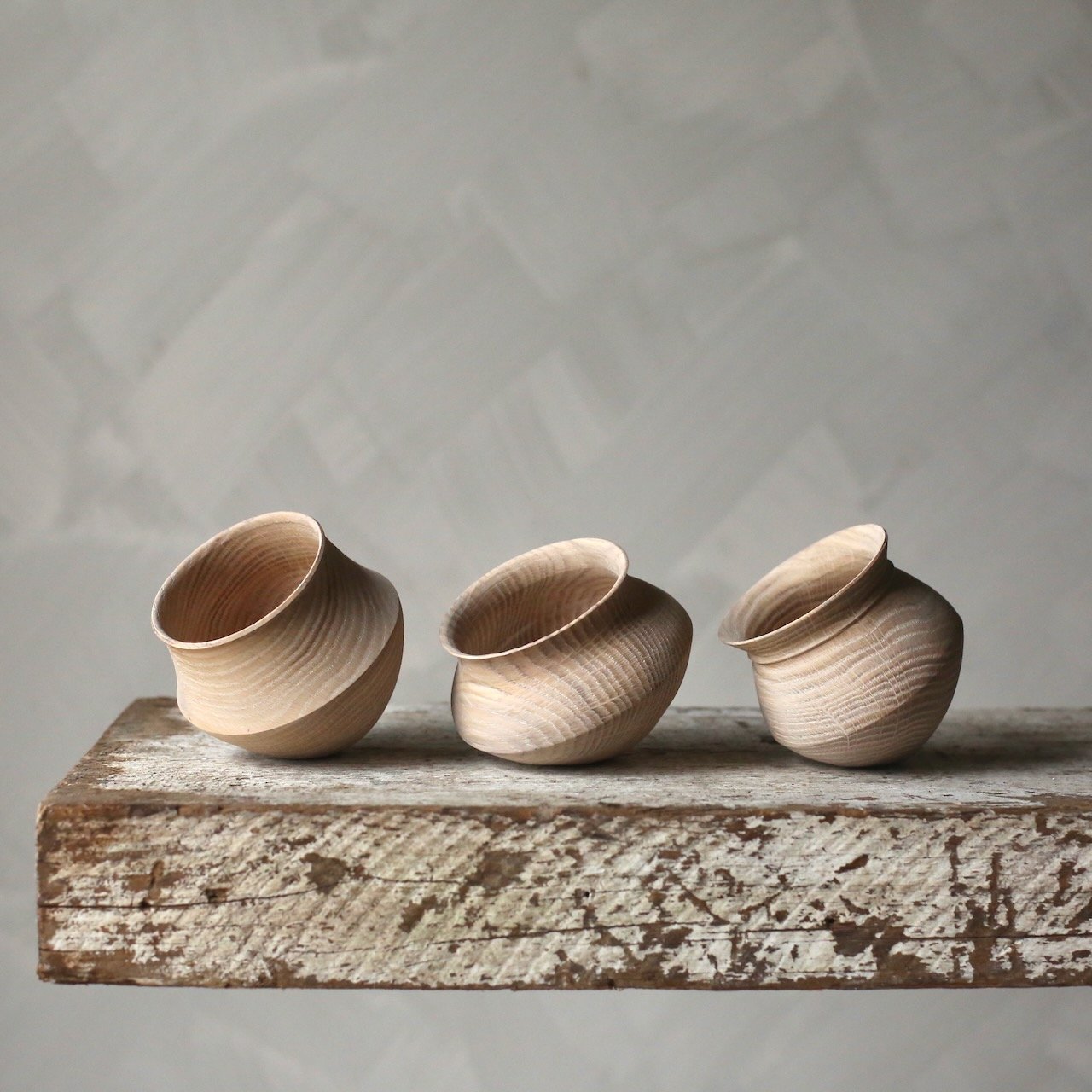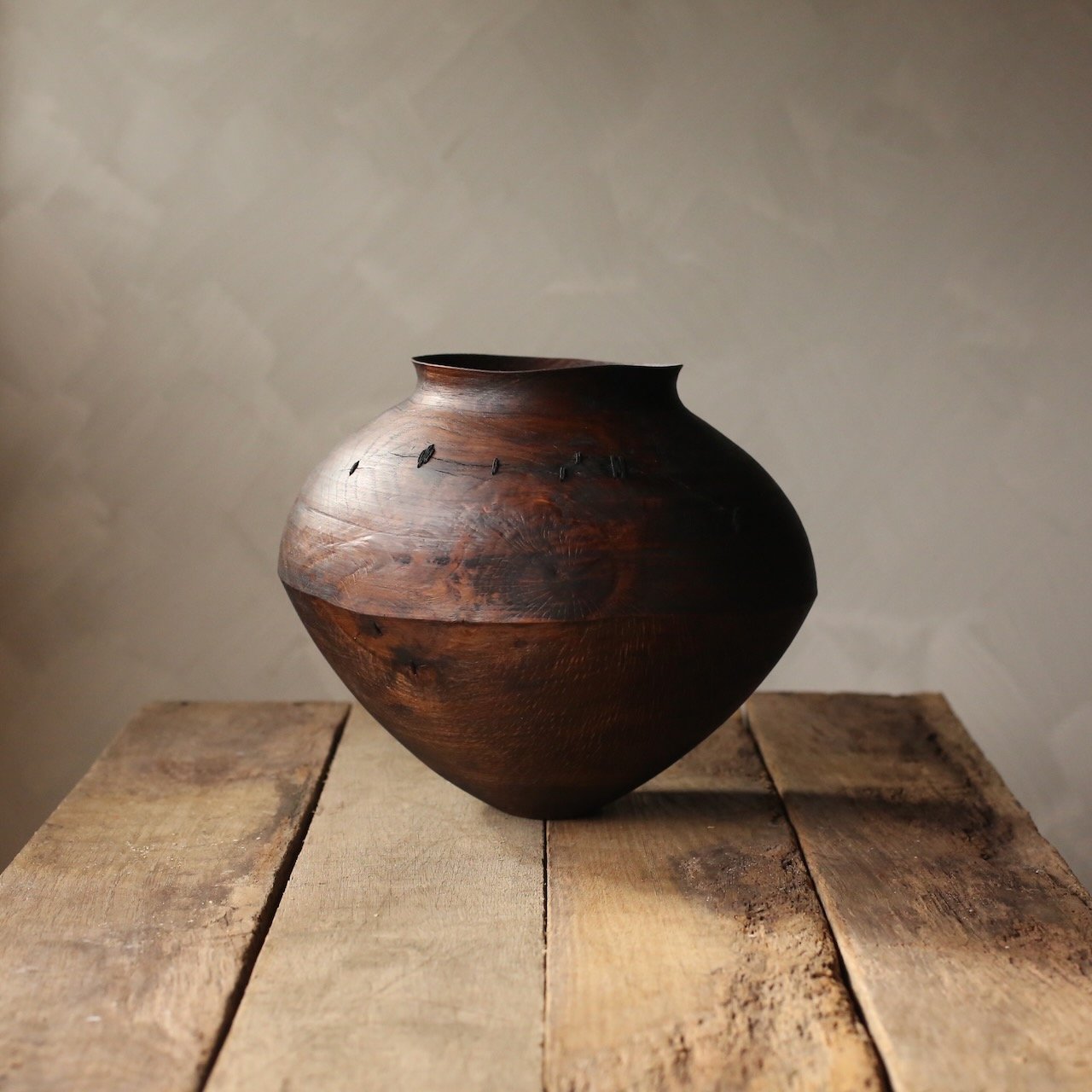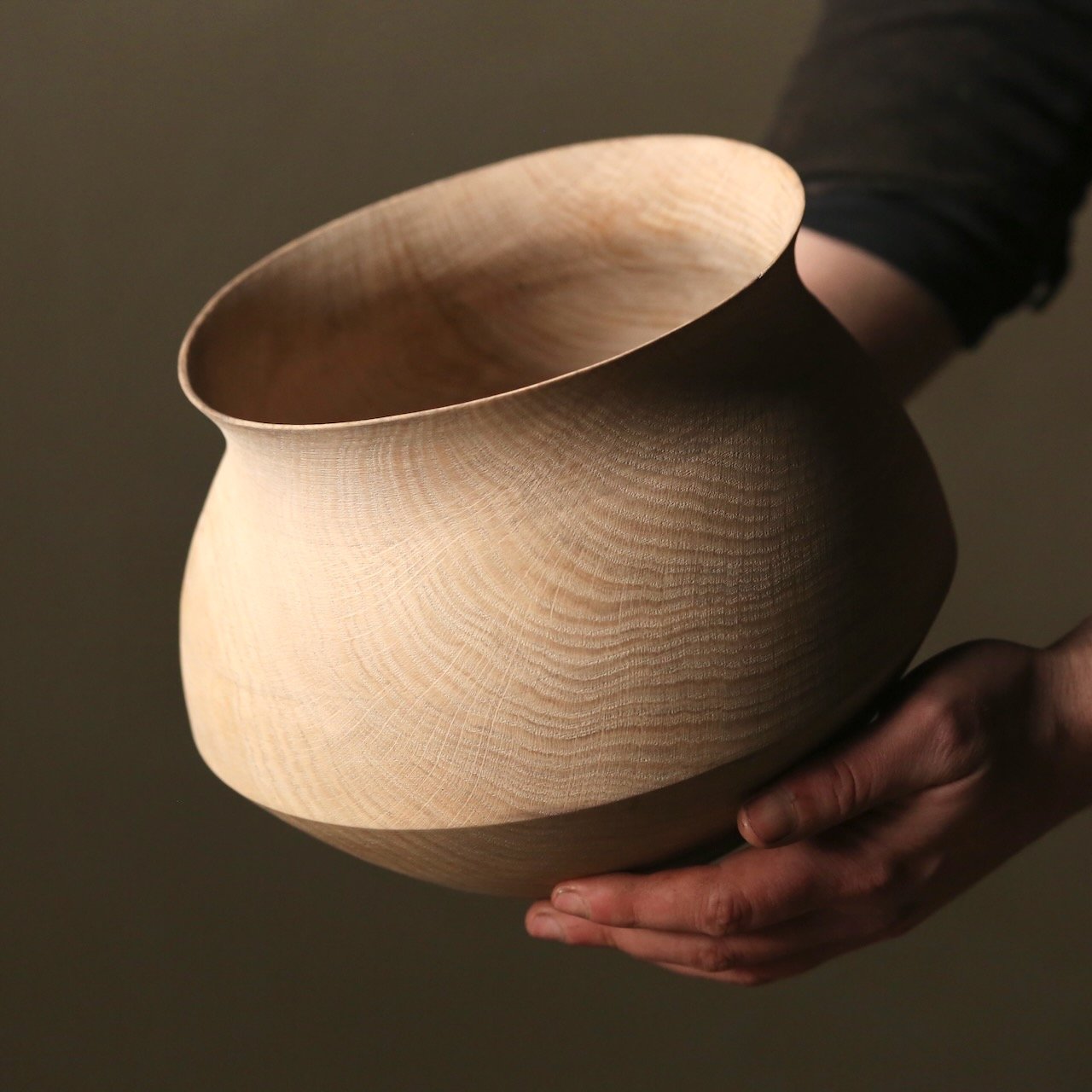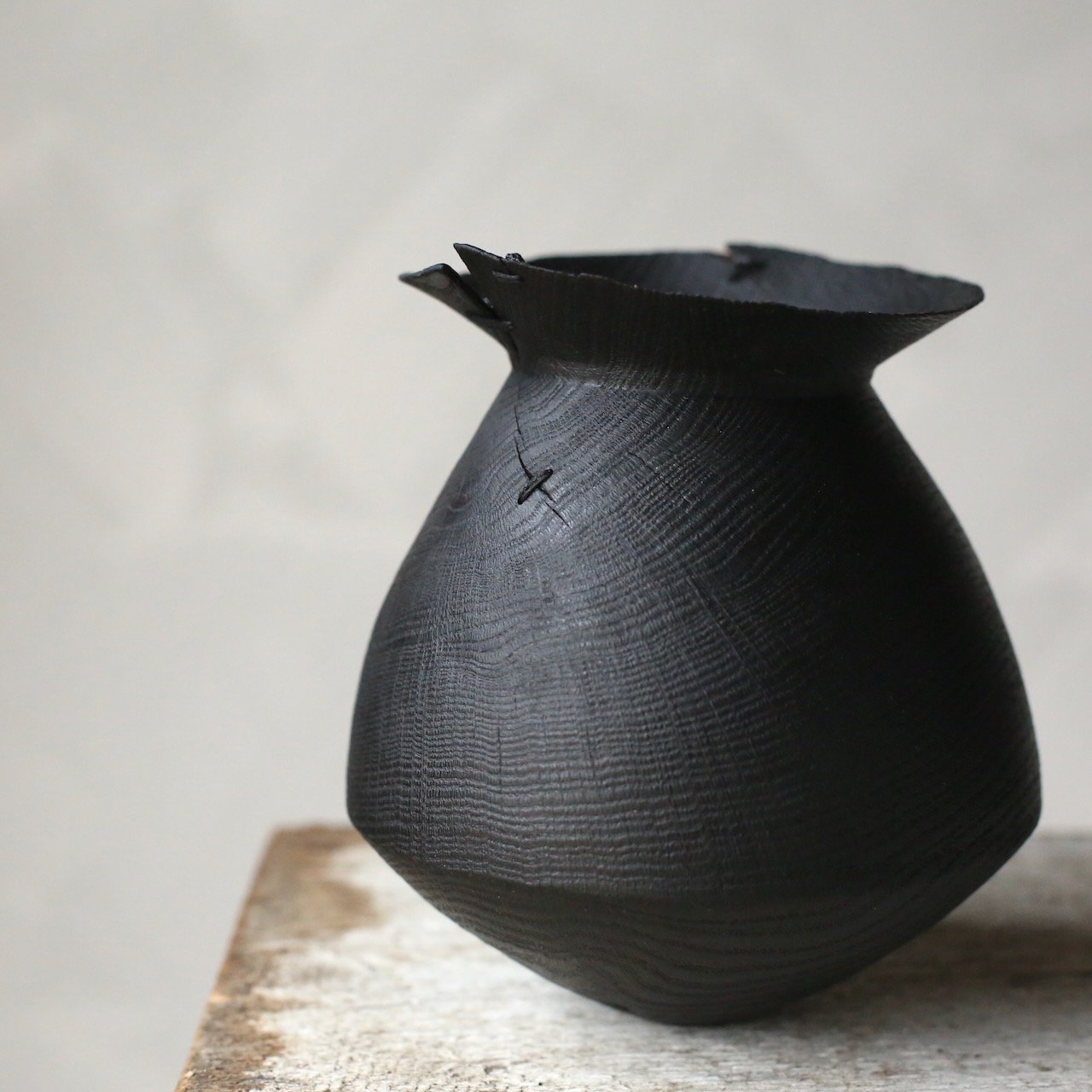Upcoming Show — Ash & Plumb
31st March - 28th April
This month, Flow is looking forward to a new show with artist duo Ash & Plumb,
who create functional and sculptural wood pieces exploring the ancient aesthetic archetypes of vessels in a modern context. Learn more about their inspirations and practice in a Q&A with the artists below.
"The work is a celebration of the imperfect, as much a collaborative process with each other as well as the material itself. We are drawn to weathered, beaten and aged finishes, specialising in the alchemy of patina and unique surface."
— Ash & Plumb
Join us for the Private View, 6pm on the 30th March
Which woods do you use, and how do you source your materials?
We work almost exclusively with Oak sourced locally to our workshop, either from local sawmills or arborists opting for material unsuitable for most commercial use. For this particular collection, the tree came from a re-wilding project in Kent.
How does your work connect to the Sussex landscape surrounding your workshop?
The Sussex landscape really is intrinsic to our work. The local landscape is littered with beautiful Oak trees and curvaceous and undulating hills that we spend a lot of time on, exploring the Downs out with our two dogs.
What inspires your surface textures?
We have a fascination with the alchemy of patina and ancient burnished or eroded surfaces that still show the signs of the maker in subtle and unexpected ways.
Which techniques do you use to achieve the surfaces?
A mixture of traditional techniques used in slightly unconventional ways, I would say. From using something as primitive as fire to blacken and erode forms to creating different reactions with the naturally occurring tannins in the Oak to achieve an almost burnished, leather-like appearance. Or more recently, exploring a new lighter natural finish that was achieved through a layer of hard-wax oil combined with a light pigment followed by a traditional Danish Soap finish.
Your forms are typically vessels - what attracts you to vessels?
Are there particular ancient examples you find interesting?
Absolutely! We are particularly fascinated with vessels from the Neolithic era but not exclusively so, many of our forms are interpretations of specific forms we have discovered such as our Saxon Vessel or Funnel Jar which is named after the Funnel Beaker culture (4300 - 2800 BC). There’s something about the vessel that we as humans appear to be intrinsically drawn to, a curiosity that also delights and fascinates us.
There is a particular interest in fractured, mended and eroded forms in your work, could you expand on why you are drawn to these?
We relish in the imperfect as opposed to seeking otherwise – why fight the natural inclination of the wood? If it fractures, celebrate it and make it a feature that we can delight in as opposed to frustrate over. As such we delight in processes that indulge in these imperfections, it is perhaps a more honest representation of our true selves!
Do you collaborate on all parts of the making process?
Whilst our work is inherently collaborative, we are responsible for different aspects of the making process. Barnaby is responsible for the turning and shaping of the work, followed by us both collaborating on the finishing process before Dru is responsible for any of the stitch-work that is required to celebrate any of the natural imperfections.
About their New Collection
‘This collection is a playful exploration of form and finish and a celebration of the Oak tree from which these vessels were hewn, featuring a recently developed softer natural finish alongside our established darker offerings’.








